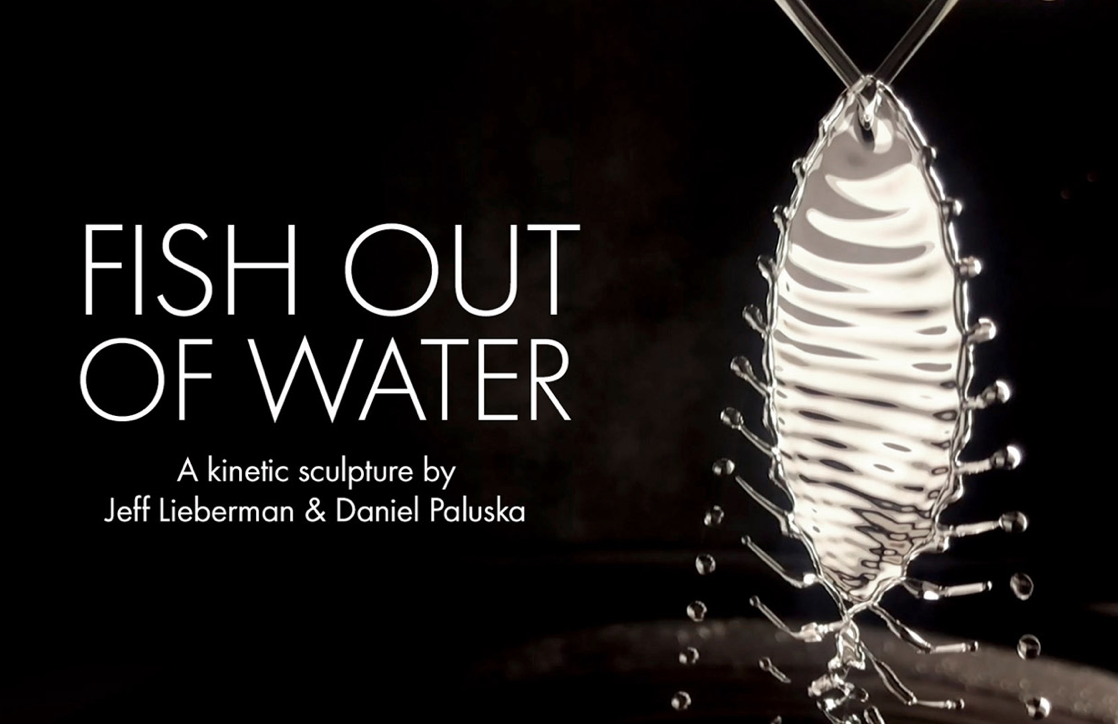We examine the form of the free surface flows resulting from the collision of equal jets at an oblique angle. Glycerol-water solutions with viscosities of 15-50 cS were pumped at flow rates of 10-40 cc/s through circular outlets with diameter 2 mm. Characteristic flow speeds are 1-3 m/s. Figures 3-9 were obtained through strobe illumination at frequencies in the range 2.5-10 kHz.

Figure 1: At low flow rates, the resulting stream takes the form of a steady fluid chain, a succession of mutually orthogonal fluid links, each comprised of a thin oval sheet bound by relatively thick fluid rims. The influence of viscosity serves to decrease the size of successive links, and the chain ultimately coalesces into a cylindrical stream. As the flow rate is increased, waves are excited on the sheet, and the fluid rims become unstable. The rim appears blurred to the naked eye (Figure 2); however, strobe illumination reveals a remarkably regular and striking flow instability ( Figures 3-6). Droplets form from the sheet rims but remain attached to the fluid sheet by tendrils of fluid that thin and eventually break. The resulting flow takes the form of fluid fishbones, with the fluid sheet being the fish head and the tendrils its bones. Increasing the flow rate serves to broaden the fishbones. Figures 7-9: In the wake of the fluid fish, a regular array of drops obtains, the number and spacing of which is determined by the pinch-off of the fishbones.


Some of these photos have appeared in Hasha & Bush, Gallery of Fluid Motion (2002). A combined theoretical and investigation of fluid chains and fishbones is presented in Bush & Hasha, JFM (2004).
Our discovery of the fluid fishbones inspired the work of kinetic art entitled Fish Out of Water, by Jeff Lieberman & Daniel Paluska.

